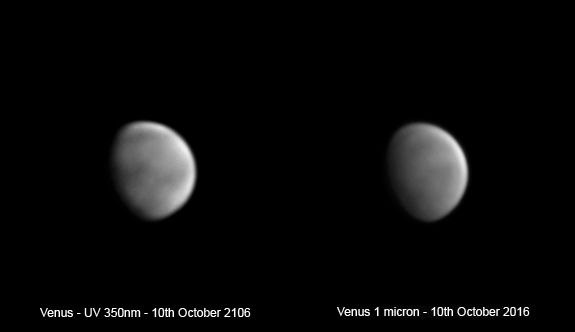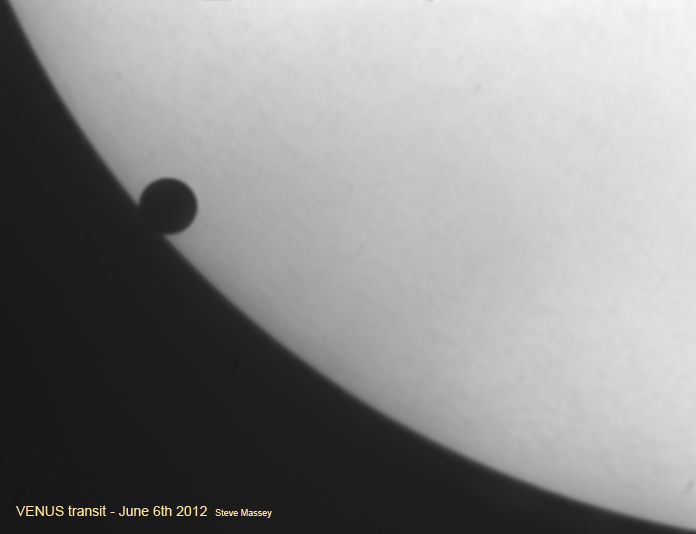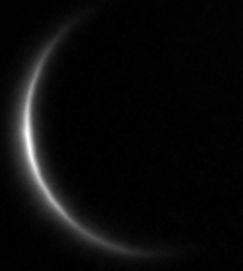
Ultra-violet image 2018
12 inch Newtonian ProStar Concorde 290M camera and 350nm filter.

Ultra-violet image 2018
12 inch Newtonian ProStar Concorde 290M camera and 350nm filter.

Venus 8th August 2018 with 12 inch telescope + 685nm pass filter and ProStar Concorde 290M camera.

Even though the above image is from a colour camera without any special filters used, dusky markings in the planets upper clouds can just be made out and show subtly in the blue channel. The planets dusky appearance was quite obvious at the eyepiece on this occasion.

Venus in 2016 at 350nm ultra-violet and 1000nm near infrared wavelengths. Camera was a GSTAR-EX2

Venus 26th Oct 2016

Venus 28th Oct 2016

Venus 4th May 2004 - with 1-micron pass filter reveals the planets night side due to the incredibly hot surface temperatures which radiate back in to space at near infrared wavelengths. The dark regions are believed to be a mix of dense cloud areas and cooler regions of higher topography. Telescope was a 10 inch Newtonian and GSTAR-EX video camera.
Announcement published in Australian
Sky & Telescope magazine Jan 2005

Venus at near infrared wavelengths in 2013
12 inch Newtonian and GSTAR-EX with 1 micron filter.

Venus 24th December 2013 with GSTAR-EX camera and 5X tele-negative lens and 12-inch Newtonian telescope. It was a refreshing reminder when this planet presents such a large angular diameter just how easy it is to see visually its crescent phase even in a simple 6 X 30 mm finder scope.

Two days later, 26th Dec 2013 this image of Venus with a 1 micron filter. Very subtle post processing.
12-inch Newtonian @f/10
Camera - GSTAR-EX

Venus near the limb of the Sun during the transit of June 2004
The amazing transit of Venus as seen from Sydney on the 8th of June 2004. A truly spectacular event to witness both at the eyepiece and with the video camera and monitor. I was quite surprised by the complete absence of the "black drop effect" even though it was highly anticipated based on historical accounts from previous observations. The next such transit event will take place in the year 2117.

Venus on the edge of the solar limb around 3rd contact during the transit of June 2012.
Venus Transit 2012 from Hervey Bay QLD - Near 2nd contact with Thousand Oaks 0.9A solar filter and 60mm Vixen refractor. The seeing was very poor and the Sun low to the East hence the slightly warped disk shape of the planet.

Venus nearing 2nd contact point during the last transit in 2012

Video image from 2001 of Venus when it had reached dichotomy.

Risky Daytime video image of Venus taken on the 27th of October 2002 only 1.25% illuminated !!!
This page was built with Mobirise